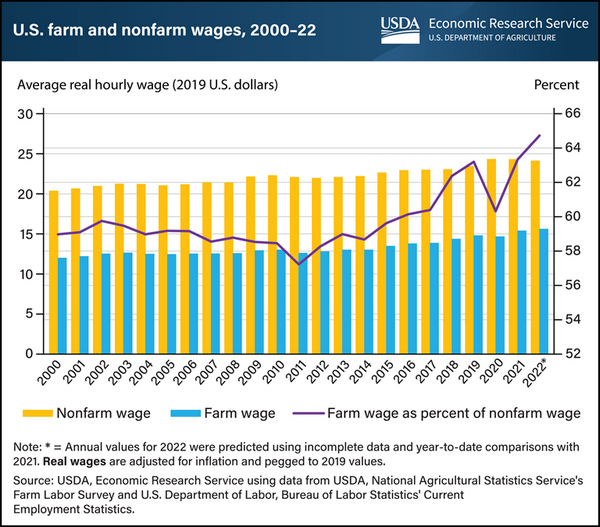Between 2000 and 2022, the real (inflation-adjusted) hourly wage rate of hired farm workers increased by 28 percent. Growth in the average wage rate of hired farm workers during that period outpaced the hourly wage growth of nonfarm workers by 11 percentage points. Further, the gap between real farm wages (which tend to be lower) and real nonfarm wages have narrowed. In 2011, the hourly wage of farm workers was 57 percent of the nonfarm wage rate; by 2021, this had increased to 63 percent. Increases in farm workers’ wages have been observed across the entire U.S. agricultural sector, suggesting the tightening of farm labor markets.
The U.S. fresh fruit and vegetable industry is more exposed to rising wages because produce cultivation tends to be labor-intensive, and labor costs represent a significant share of production expenses. Agricultural producers are managing tight labor markets by hiring foreign farm workers, reducing labor needs through mechanization, or in some cases, decreasing the production of labor-intensive crops such as cantaloupe, fresh field-grown tomatoes, iceberg lettuce, and raisin grapes. This chart is drawn from the USDA Economic Research Service’s report Adjusting to Higher Labor Costs in Selected U.S. Fresh Fruit and Vegetable Industries, published in August 2022.

